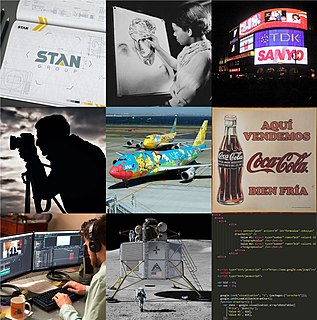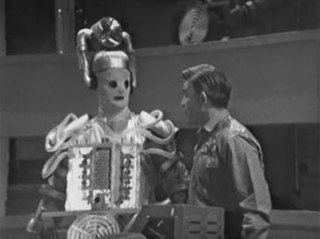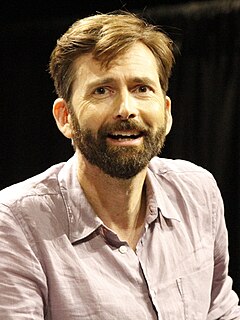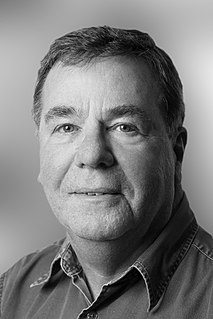Related Research Articles

Graphic design is the profession and academic discipline whose activity consists in projecting visual communications intended to transmit specific messages to social groups, with specific objectives. Design is based on the principle of "form follows a specific function".

Out of the Unknown is a British television science fiction anthology drama series, produced by the BBC and broadcast on BBC2 in four series between 1965 and 1971. Most episodes of the first three series were a dramatisation of a science fiction short story. Some were written directly for the series, but most were adaptations of already-published stories.

Bernard Bresslaw was an English comic actor, best remembered as a member of the Carry On film franchise team, but also worked on television and stage, did recordings and wrote a series of poetry.

Bernard Joseph Cribbins OBE is an English actor, voice artist and singer whose career spans seven decades.

Jim Broadbent is an English actor. He won an Academy Award and a Golden Globe Award for his supporting role as John Bayley in the feature film Iris (2001), as well as winning a BAFTA TV Award and a Golden Globe for his leading role as Lord Longford in the television film Longford (2006). Broadbent received four BAFTA Film Award nominations and won for his performance in Moulin Rouge! (2001). He was also nominated for two Primetime Emmy Awards and four Screen Actors Guild Awards.

Saul Bass was an American graphic designer and Oscar-winning filmmaker, best known for his design of motion-picture title sequences, film posters, and corporate logos.

The Third Doctor is an incarnation of the Doctor, the protagonist of the BBC science fiction television series Doctor Who. He was portrayed by actor Jon Pertwee. Within the series' narrative, the Doctor is a centuries-old alien Time Lord from the planet Gallifrey who travels in time and space in the TARDIS, frequently with companions. At the end of life, the Doctor regenerates. Consequently, both the physical appearance and personality of the Doctor changes.

The Tenth Planet is the partly missing second serial of the fourth season in the British science fiction television series Doctor Who, which was first broadcast in four weekly parts from 8 to 29 October 1966. It was William Hartnell's last regular appearance as the First Doctor, and the first story to feature the process later termed regeneration, whereby the lead character, The Doctor, undergoes a transformation into a new physical form. Patrick Troughton makes his first, uncredited appearance as the Second Doctor.

David John Tennant is a Scottish actor.

The Hitchhiker's Guide to the Galaxy is a BBC television adaptation of Douglas Adams's The Hitchhiker's Guide to the Galaxy which was broadcast in January and February 1981 on UK television station BBC Two. The adaptation follows the original radio series in 1978 and 1980, the first novel and double LP, in 1979, and the stage shows, in 1979 and 1980, making it the fifth iteration of the guide.
Sandy Dvore was an American artist, graphic designer, and title designer.

Motion graphic design, also known as motion design, is a subset of graphic design in that it uses graphic design principles in a filmmaking or video production context through the use of animation or filmic techniques. Examples include the kinetic typography and graphics used in film and television opening sequences, and the spinning, three-dimensional station identification logos of some television channels. This art form has been around for decades, and has advanced in technical sophistication over time.
Sid Sutton is a British graphic designer most famous for designing the Doctor Who title sequences from 1980 until 1986. The title sequences for Doctor Who were the starfield versions and were used from The Leisure Hive until the end of The Trial of a Time Lord. For 1987's Time and the Rani, Oliver Elmes designed the titles. Sid Sutton also provided the cover designs for the earliest BBC VHS Video Doctor Who releases, including The Seeds of Death and Day of the Daleks. He also created logos for Sveriges Television.

Oliver Elmes was a British graphic designer. He designed a number of logos for the BBC, including Elizabeth R, The Goodies, but is best known for his title designs for The Good Life and the final three years of the original run of Doctor Who, from 1987 to 1989.
Nigel Holmes is a British/American graphic designer, author, and theorist, who focuses on information graphics and information design.

Martin John Lambie-Nairn was an English designer. He was the founder of his branding agency Lambie-Nairn and was the creative director of branding agency ML-N. He is recognised for having redefined television brand identity design, being the first to embrace computer technologies to apply branding to screen-based media.
Rosalind Dallas was a British graphic designer
Daniel Richard Perri is an American film and television title sequence designer. He has worked in film title design since the 1970s, and has been responsible for the main titles of a number of notable films including The Exorcist (1973), Taxi Driver (1976), Star Wars (1977), Raging Bull (1980), Airplane! (1980), and Suspiria (2018).
Clive Piercy was a British-American designer, author, and design educator, active for four decades in London and Los Angeles. He was noted for his use of typography, his color sense, his visual wit, and for bringing a British sensibility to the California aesthetic.
The British Academy Television Craft Award for Best Titles & Graphic Identity is one of the categories presented by the British Academy of Film and Television Arts (BAFTA) within the British Academy Television Craft Awards, the craft awards were established in 2000 with their own, separate ceremony as a way to spotlight technical achievements, without being overshadowed by the main production categories. According to the BAFTA website, this category is "to recognise originality and excellence within the title sequence and graphic identity of a programme.", also stating that "the same title sequence may not be entered more than once. The same programme may be entered in consecutive years, but only if it has new titles."
References
- ↑ "On-screen graphic design: The early years of television". The Open University. 22 September 2015. Retrieved 10 August 2017.
- 1 2 Peters, Tony (11 November 2013). "Meet Bernard Lodge, the man behind the Doctor Who titles". Radio Times. Retrieved 9 August 2017.